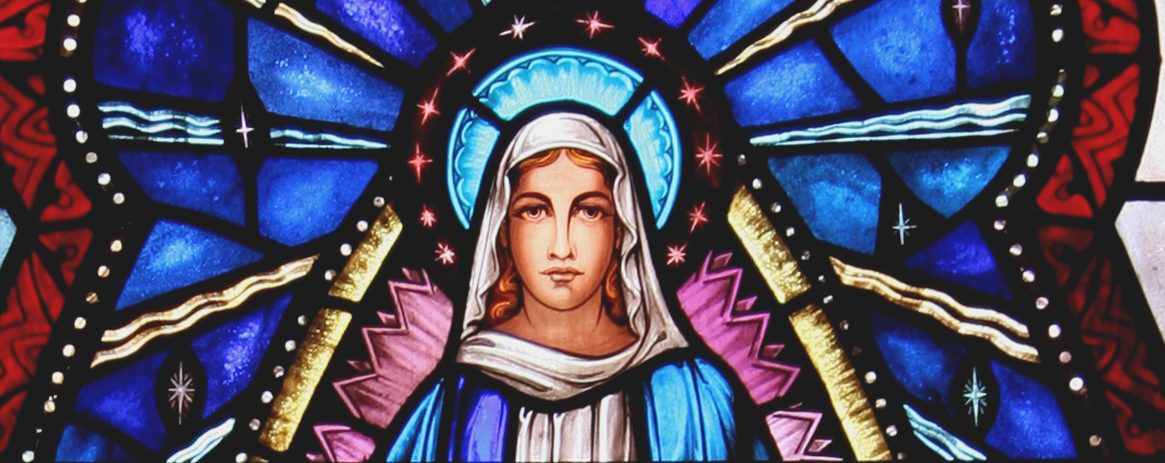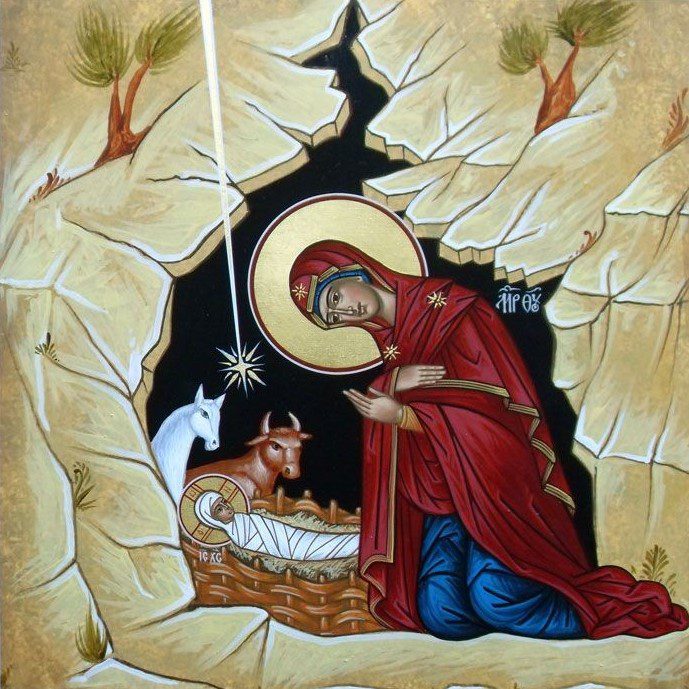“And She gave Birth to Her First-Born Son”
The Incarnation of God in the person of Jesus Christ is the perfect union of heaven and earth. The divine is wedded to the human becoming a seamless synergy of will and person. This union begins in the womb of the Blessed Virgin Mary, the New Ark of the Covenant, when she conceives the Son of God. For nine months this great treasure remains hidden in the body of Our Lady, a joy that only she can truly understand. Now, in the city of Bethlehem, under the shadow of a cave turned into a make-shift stable, the child she has nourished and protected is given to the world; the creature gives birth to her Creator. The historical and symbolic significance of this event cannot be underestimated particularly in regards to the relationship between Christ and His Mother. From the beginning the Church has recognized the connection between the events of Jesus’ birth and death; His Infancy and Passion go hand-in-hand. Within the wood of the manger, we see a prelude to the wood of the Cross. The first thing Jesus touches in His life will be the last thing Jesus touches in His life: Wood. Likewise, the ancient artists of the Church deliberately depict the child Jesus as if prepared for burial, covered in a white cloth from head to toe as can be seen in the illustration accompanying this article. Here, we see a link between the “swaddling clothes” (Lk. 2:7) with which Jesus is wrapped on the day of His birth and the “linen clothes” with which he is wrapped on the day of His death (Lk. 23:53). There is much more that could be said about the allusions strewn throughout the Infancy Narrative predicting the Passion. But, these two examples are sufficient to highlight the prerogative of this article, namely, “Who was the only person present at both of these decisive events in salvation history?” The Blessed Virgin Mary. At the Birth of Jesus, which must be interpreted in light of His death on the Cross, we find Mary the faithful stewardess, kneeling in silent and tender adoration. As she cradles and gazes upon the face her Child, the only child in history who was born to die, her pride of place in the story salvation is clearly revealed. Hers are the arms by which God’s longing to be held by humanity is satisfied just as hers are the arms that will embrace the crippled tortured body of her beloved Son from the Cross after He has satisfied man’s desire to be held by God. Thus, we find Our Lady at the intersection of two infinite thirsts: God for humanity and humanity for God. May she continue to be the great sentinel of this thirst which has been quenched by the fruit of her womb, Jesus Christ the Lord.



